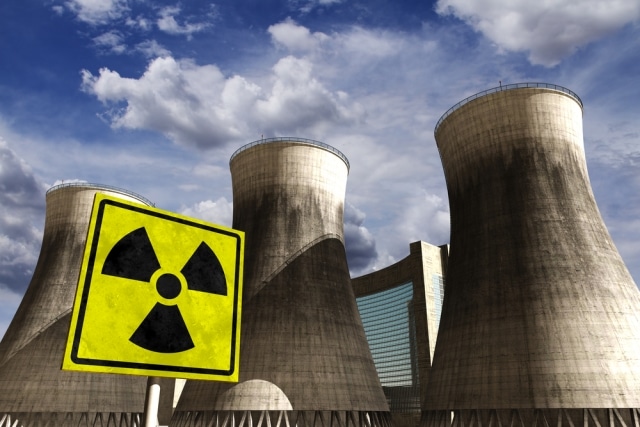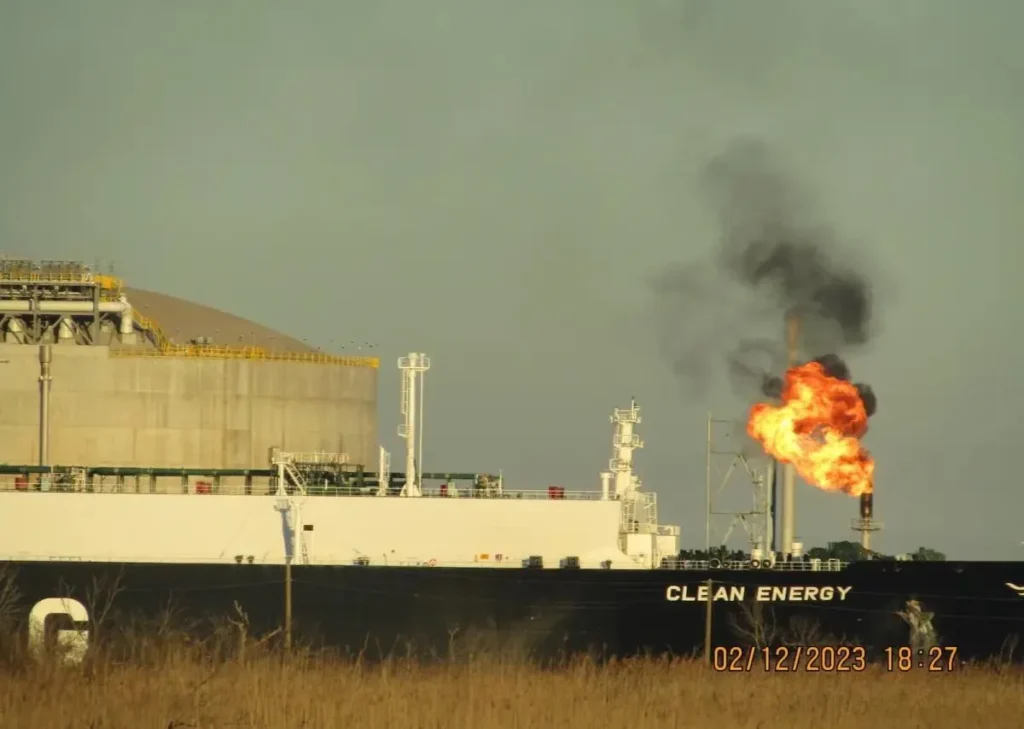Three years ago the world was reminded of the dangers nuclear energy poses when catastrophe struck Japan at the Fukushima power plant. Since then the gravity of the disaster has grown more evident as cleanup efforts have turned into a debacle. In the last month alone we have seen news of radioactive water leaks at the site, lawsuits from U.S. Navy sailors who responded to the initial disaster and are now developing cancer and ongoing harm to the fishing industry.
The nuclear industry is often portrayed as a climate-neutral alternative to coal and natural gas. An industry-tied movie called Pandora’s Promise, recently featured at Sundance and debuted through Netflix and iTunes, has been promoting this very perspective.
But nuclear power plants need cooling water, which means they are often situated on shorelines. That makes these plants more vulnerable to the consequences of climate change, such as sea level rise. They are also more at risk of being affected by the ever-growing number and severity of storms tied to climate change, such as Hurricane Sandy.
Case in point: National Oceanic and Atmospheric Administration researchers recently concluded that a small six-foot-high miniature tsunami that hit near a New Jersey nuclear power plant this summer was not the result of a seismic event (as tsunamis usually are). Instead, the researchers concluded that the surge was caused by a sudden atmospheric pressure change. The nuclear plant, Oyster Creek, did not report any damage. But experts say there was a cautionary lesson on offer: expect the unexpected. Climate change will cause more destructive and seemingly freakish events like this. Emergency planners need to plan for them — especially when the risks are high as is the case with nuclear plants.
Coal plants are increasingly being retired nationwide. As a result, permit applications for new nuclear power plants have sharply increased for the first time in 30 years. Construction has begun at a handful of plants nationwide. But federal authorities have given little consideration to sea level rise and other climate change impacts. These officials have paid even less attention to the shifting risks associated with the storage of nuclear waste.
Fukushima: The Catastrophe Continues
On January 18, workers at the Daiichi nuclear reactor discovered a water leak in the building that houses Reactor 3. That building exploded on March 14, 2011, three days after a 9.0 earthquake and ensuing tsunami. Japanese officials later confirmed that the reactor was one of three at the plant that had melted down.
Since this summer, steam has repeatedly risen from the reactor. This has spurred concerns about a new meltdown. Officials from Tokyo Electric Power Company (TEPCO) have reassured the public that the steam was likely from rainfall and atmospheric conditions, adding that radiation levels did not rise during the steam events.
This week, troubles continued at the reactor. TEPCO announced that unlike the steam, a foot-wide water leak on the first floor of the Reactor 3 building carried high temperatures and levels of radioactivity and that the leaking water had likely been used to cool the reactor. Officials said there was no indication the leaking radioactive water had escaped the building. But controlling leaks like these is key to cleanup plans for the stricken reactors and the discovery represented another setback for TEPCO.
These troubles are the tip of the iceberg. Even if things go as planned, TEPCO officials predict removing the fuel from the plant will take 30 or 40 years. Removing the nuclear fuel from Reactor 4, which was damaged but did not melt down, is expected to consume much of this year, and then the company must confront the much more complex task of removing fuel rods from the three melted reactors. Meanwhile, there are the 400 metric tons of groundwater contaminated every day by radiation from the site, which has forced TEPCO to store 400,000 metric tons of the water in 1,000 rickety storage tanks that have repeatedly leaked, sending radioactive materials into the ocean. Another quake could unleash a massive spill of that radioactive water.
A Climate-Neutral Fuel?
Driven by fear of catastrophic climate change, some prominent scientists have begun campaigning for increased reliance on nuclear plants. On November 23 climate and energy scientists James Hansen, Ken Caldeira, Kerry Emanuel and Tom Wigley published an open letter to world leaders calling for increased reliance on nuclear power as a tactic to quickly cut carbon emissions.
“Global demand for energy is growing rapidly and must continue to grow to provide the needs of developing economies,” they wrote. “At the same time, the need to sharply reduce greenhouse gas emissions is becoming ever clearer.”
But the climate harm that has already been done makes reliance on nuclear power more dangerous.
In a report published October 23, the Intergovernmental Panel on Climate Change more than tripled its 2007 projections for sea level rise, predicting a rise of up to 82 centimeters by 2100.
This means worse effects from storms. “With sea-level rise, it’s not the slow creeping that’s the problem,” John Perkins, Evergreen State College environmental historian, told Climate Central. “It’s the fact that with storms and other extreme events you push more water farther inland, which can create real problems.”
In 2011, a paper Perkins published in the journal Energy Policy found that direct sea level rise during the expected life of U.S. nuclear plants poses little risk, as the plants are sufficiently elevated. But these higher seas would lead to storm surges during Category 4 or 5 hurricanes that would completely submerge the nuclear power plants. And if the IPCC’s newly tripled predictions hold true, the storm surge from hurricanes could prove even more devastating to American nuclear plants.
Little Planning, Big Risks
Meanwhile, some say U.S. nuclear regulators have been burying their heads in the sand. On Dec. 19, the Columbia Center for Climate Change Law faulted the Nuclear Regulatory Commission for failing to take storm surges into account. “[M]erely accounting for a static sea level rise does not consider risks due to more frequent and severe flooding,” they wrote in public comments surrounding plans to store spent nuclear waste at operating power plants.
“Sea level rise takes the current level of vulnerability and multiplies it,” Senator Jeff Bingaman, Democrat from New Mexico explained in a 2012 congressional hearing. “When sea levels rise, the storm surge associated with extreme storms gets even worse, and even an average storm can have above-average consequences.” Though experts at the hearing called for the Nuclear Regulatory Commission to study the risks, only six senators attended that hearing, and experts say planning remains insufficient.
As of 2011, the U.S. had 104 nuclear reactors at 65 plants nationwide, a quarter of which were designed like the Fukushima Daiichi plant. Many of these plants are located near densely populated coastal areas.
In Florida, two nuclear plants are located on barrier islands, including the Turkey Point plant, which survived a hit from Hurricane Andrew in 1992. Engineers at Turkey Point had enough warning to shut down the plant’s reactor before the hurricane hit, but the resulting damage left the plant dependent on diesel generators to run the cooling pumps for five days. At Fukushima, flooding from the tsunami wiped out cooling systems.
More recently, Hurricane Sandy prompted the shutdown of several nuclear reactors along the densely-populated East Coast. Though damage to nuclear power plants from the storm was minimal, experts warn that climate change makes storms like Sandy and Andrew far more likely to recur. In September, the National Oceanic and Atmospheric Administration released a study that warned the probability of a storm like Sandy recurring had doubled since 1950. If carbon emissions continue on their current path, the federal researchers warned, Sandy-level storm surges could become a yearly occurrence by 2050.
“We learned that they (the region’s nuclear power plants) just barely made it through safely during Sandy,” Klaus Jacob, a seismologist at Columbia University, told Climate Central after the storm, “but that does not imply that future storms, when combined with continued SLR (sea level rise), could not cause serious problems.”
Subscribe to our newsletter
Stay up to date with DeSmog news and alerts







